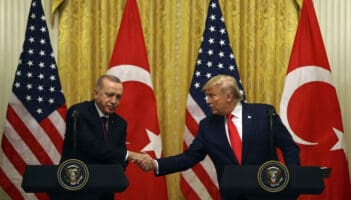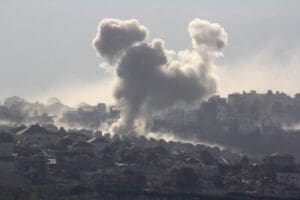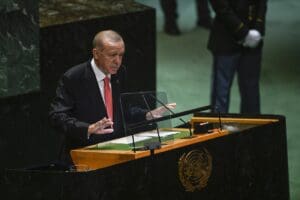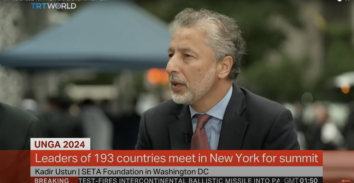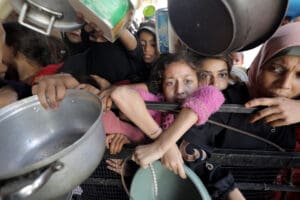Why Will Things Only Get Worse for the Ethnic Conflicts of China?
The increasing tensions between the Uighurs and the Chinese government, and the increasing number of violent incidents in Xinjiang (aka East Turkistan) in the last two years demonstrate that the region has become a hot bed of ethnic conflict. The main causes of the conflict and roots of the tension in the region have been an issue of debate for decades now. Despite the availability of different accounts of developments in the region, there are now five frequently cited factors including the economic deprivation of Uighur communities, Han–Chinese migration to the region as a part of demographic assimilation, cultural and religious restrictions, lack of political and civil liberties, and increasing discrimination towards the Uighurs in China. Although there are many studies on the diagnosis of the conflict, the Chinese government does not pay attention to any of these factors, and provides its own narrative of the situation, which depends on the role of external forces and emergence of some “evil forces” that want to divide China.
The power transitions, the emergence of a new generation of leaders, market liberalism, and finally, the return of old guards have never changed the policy of China towards the Uighur question. As the Chinese economy and society have transformed in the last 25 years, one area that China has not changed its policy but has actually become tougher about over time was its stance towards the Uighur community. The leadership of Xi Jingping for the last one–year demonstrates that the new strongman of Beijing is adamant to follow suit with the old techniques that will make things difficult for Uyghurs in the coming years. However, this situation does not promise a resolution of the conflict or a smooth exit for the Chinese government from this problem either. On the contrary, it demonstrates that the problem will continue to grow in the coming years.
First of all, the main issue with the Uighur question is the reluctance of the Chinese government to recognize the existence of a “problem.” Despite the portrayal of “happy minorities” by the Chinese authorities, everyone in the world who has a slight idea about the region and China know the reality. A marginalized, discriminated and increasingly impoverished ethnic group with no political and civil rights should not be expected to remain silent in this world of social media and street politics. However, somehow the Chinese government first propagated, and then believed its own propaganda that the Uighurs were the “luckiest ethnic minority” in the world. In this regard, the demands and grievances of the Uyghur society have never been taken into account. The Chinese government continues its monologue regarding ethnic issues, and avoids engaging in any form of dialogue with the Uighur community. This inability to recognize the problem will only exacerbate the situation on the ground.
Secondly, Chinese authorities continue to see every form of mass movement or political activity in the region through the lens of “three evil forces” of “separatism, terrorism and extremism.” Especially in recent years, the government continuously attributes the eruption of clashes between the Uighurs and the security forces as a result of the increasing impact of these “three forces.” The misperception of the problem makes the recipe problematic as well. For Beijing, the only solution for the problem is a military one. The authorities believe that it is a security problem—not a social, economic or cultural one. However, the military solutions to the problem only exacerbate the situation. It is creating a cycle of state led repression and riot in the region. The recent laws and regulations adopted in the region demonstrate that the new leadership in China has no initiative or plan to break this cycle.
Lastly, the Uighurs have become a “necessary evil” for the Chinese government for the last ten years. For China, they are the “others” who need to be Sinicized, reformed and modernized. The riots are portrayed as an attempt to divide Chinese homeland and the Uighurs have become the usual suspects for any form of violent incident in the region. Anti–Uighur sentiment among Han Chinese is spreading rapidly, and the anti–Western nationalism of the 1990s is being replaced by the anti–Uighur nationalism. The Chinese government is portraying its new role as the protector of all ethnic groups, national unity and territorial integrity of the country from the “three evil forces” that come mostly from the Uighurs. However, the instrumentalized “othering” of the Uighurs is evolving into more deeply–seated social discrimination against the Uighurs, which may pave the way for interethnic and communal violence that would be difficult to contain in the future.
Under these circumstances, it is not hard to imagine that the situation will lead to increasing radicalization in the Uighur society and political groups. The heavy–handed policies and strike–hard campaigns of the Chinese government only contribute to this alimentation and marginalization. The recent attacks by the Chinese government on the religious and cultural practices of the Uighurs is now perceived as existential threats to the Muslim Uighur identity in the region. Thus, the belief among the Uyghurs about the peaceful resolution of the problem through negotiation is declining rapidly. This picture illustrates that, unfortunately, in the coming months and years, we will see more of the violent incidents and crises taking place in the region.
This article was originally published in Daily Sabah on August 2, 2014.

